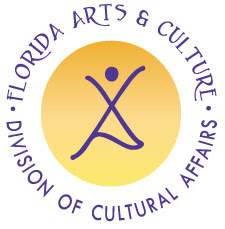Actors run the GhostFood mobile trailer, created by
Miriam Simun and Miriam Songster, part of “Marfa Dialogues/New York.”
COURTESY GHOSTFOOD
Rauschenberg Foundation: Bridging the Gap Between Art & Life
By George Stolz Posted 03/26/14
On a brisk evening last fall, a food truck stood parked outside the Robert Rauschenberg Foundation Project Space in Chelsea. This particular food truck, however, was not just a food truck. It was a participatory artwork entitled GhostFood
that served up simulated taste experiences of foods—such as chocolate,
peanut butter, and codfish—that are under threat from the effects of
global warming on the food chain.
GhostFood, created by Miriam Simun and Miriam Songster, formed part of a group show opening that evening at the foundation. Curated by Fairfax Dorn
and titled “Quiet Earth,” it focused on the issue of climate change in
the works of artists such as Agnes Denes, Maya Lin, Trevor Paglen,
Donald Judd, and Rauschenberg himself. The exhibition in turn was the
centerpiece of a two-month-long series of climate change–related events
called “Marfa Dialogues/New York,”
organized under the auspices of the foundation, which included
exhibitions, film screenings, performances, lectures, and panel
discussions in more than 30 venues across New York City.
“These aren’t just grants that we’re going to give to art institutions that do Rauschenberg exhibitions—that’s just not what we do,” said Christy MacLear, the foundation’s executive director. “We look at our grant making through the lens of the values that defined Bob. So you don’t only say, ‘What would Bob do?’ Instead, you set up a framework so that a hundred years from now you can ask: Is it collaborative? Is it boundary-breaking? Is it risk-taking? Is there a concept of creative problem-solving? Is it international and looking at art as a method of peacekeeping?”
“They’ve hit the ground running,” said Jack Flam, president and CEO of the Dedalus Foundation, which was founded by Robert Motherwell to foster public understanding of modern art while preserving the painter’s own artistic legacy. “In classic philanthropy, you give money away. Then there’s another kind, where you start programs that give money away. But then again there are artist foundations that are actually involved in programs as they develop, which in fact is something all artist foundations are thinking about now. They’re doing that from the start at the Rauschenberg Foundation.”
Rauschenberg died in 2008 at age 82 at his home on Captiva Island, Florida. Throughout his life, he had been active—indeed, an activist—in numerous charitable and philanthropic activities, including initiatives of his own devising such as Change, Inc., which gave emergency relief grants to artists in distress, and ROCI (the Rauschenberg Overseas Cultural Interchange), which established a network of artists around the world with the intention of promoting world peace through cultural exchange.

The Fish House on Captiva Island is part of Rauschenberg’s 20-acre estate, where he lived and worked for 40 years.
LAURIE LAMBRECHT/COURTESY ROBERT RAUSCHENBERG FOUNDATION, NEW YORK
At the same time, Rauschenberg was a staunch supporter with donations of cash and artwork to a range of political causes and charitable organizations, including the Coalition for the Homeless, the Lab School of Washington, D.C., for students with special needs (such as dyslexia, from which Rauschenberg himself suffered severely), animal refuge centers, and abused women’s shelters. He was committed to ecological issues; in fact, the poster for the very first Earth Day was a collage he designed and donated to the burgeoning environmental cause in 1970.
“My father is generally described as very generous, but that’s not really accurate—he was a team player,” said Christopher Rauschenberg, the artist’s son, who is the president and chair of the foundation’s board of directors (as well as an artist in his own right). “Think of a basketball team. If the point guard passes down the lane to the center and the center dunks the ball, you wouldn’t say the point guard was generous. You would say he’s a good team player. My father was like that—but his team was everyone, the whole world.”
Although Rauschenberg established his foundation in 1990 as a means to channel his personal charitable activities, it was only after his death that it adopted its current structure. Rauschenberg himself drafted the articles of incorporation. They state that the foundation will pursue philanthropic efforts in art, international peacekeeping, the environment, health and human services, and education: “Basically, anything but religion and politics,” MacLear said. “It’s hilarious, it’s so broad!”
Read the whole article here
We are proud in Florida that Robert Rauschenberg made our State his home. The artist is a member of the Florida Artist Hall of Fame.
There is a timelessness to great artists and great artwork. The Rauschenberg foundation will continue to advance the causes that the artist found important and his artwork will continue to inspire. GL










No comments:
Post a Comment